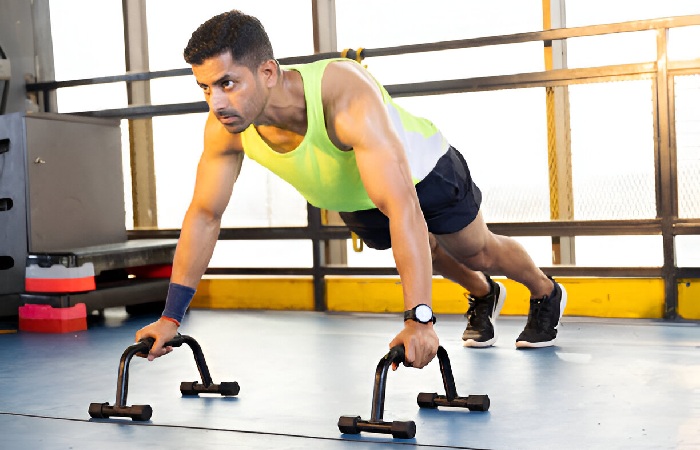The Components of Skill-Related Fitness Explained
Explain How The Components Of Skill-Related Fitness Are Interrelated And How Each Is Of Importance –
Have you ever wondered why some athletes seem to have it all—the speed, the grace, the lightning-fast reactions? It’s not just raw talent—it’s skill-related fitness.
Let’s break down these components and see how they work together to create athletic superstars.
What Is Skill-Related Fitness?

Skill-related fitness is all about the physical abilities that help you perform well in sports and other activities. It’s not just about being strong or having good endurance – it’s about how well you can control your body and react to what’s happening around you.
The Six Components of Skill-Related Fitness:
- Agility
- Balance
- Coordination
- Power
- Reaction Time
- Speed
Let’s dive into each and see how they’re all connected.
1. Agility: The Art of Quick Changes
The capacity to shift course swiftly and effectively is known as agility. It’s as easy as bouncing about the court or field like a human pinball.
Why it matters:
- Helps you dodge opponents in team sports
- This is crucial for sports like tennis or basketball, where quick direction changes are constant
- Improves overall body control
How it’s connected: Agility relies heavily on balance and coordination. You can’t change direction quickly if you’re off-balance or uncoordinated.
2. Balance: Standing Strong
Balance is about maintaining your body’s equilibrium, whether standing still or moving.
Why it matters:
- Essential for sports like gymnastics or surfing
- It helps prevent injuries in any physical activity
- Improves overall body awareness
How it’s connected: Good balance enhances your agility and coordination. It’s also crucial for generating power in many movements.
3. Coordination: Bringing It All Together
Coordination is your ability to use different body parts together smoothly and efficiently.
Why it matters:
- Key for complex movements in sports like dance or martial arts
- Improves efficiency in all physical activities
- It helps you learn new skills faster
How it’s connected: Coordination is like the conductor of an orchestra, bringing together all the other components. It works closely with balance and agility.
4. Power: Explosive Energy
The capacity to apply maximal force in the shortest time is known as power. It combines power and quickness.
Why it matters:
- Crucial for sports like shot put or long jump
- It helps in explosive movements like sprinting starts or jumping
- Improves overall athletic performance
How it’s connected: Power is directly related to speed and is enhanced by good coordination and balance.
5. Reaction Time: Lightning-Fast Responses
Reaction time is the rate at which you can respond to a stimulus. It separates catching the fly ball from just seeing it go by.
Why it matters:
- Essential in fast-paced sports like table tennis or boxing
- Improves overall safety in physical activities
- Can be the deciding factor in competitive sports
How it connects: Quick reaction times enhance your agility and can improve your power output in time-sensitive situations.
6. Speed: Moving Fast
Speed is how quickly you can move your body or parts of your body.
Why it matters:
- Crucial in sprinting events
- It is essential in many team sports to outpace opponents
- Contributes to power in explosive movements
How it connects: Speed is a crucial power component and works hand-in-hand with agility. Good coordination can also improve speed.
How These Components Work Together

Think of these components as members of a sports team. Although each has a specific role, they’re most effective when working together.
For example:
- A basketball player uses agility to weave through defenders (coordination), quickly stops and changes direction (balance), jumps to make a shot (power), and keeps an eye on the other players (reaction time).
- A martial artist needs to maintain balance while executing complex moves (coordination), react quickly to their opponent’s attacks (reaction time), and deliver powerful strikes (power and speed).
Why Improving These Components Matters
- Better overall athletic performance
- Reduced risk of injuries
- Improved body awareness and control
- Faster skill acquisition in new sports or activities
- Enhanced enjoyment of physical activities
How to Improve Your Skill-Related Fitness
- Variety is key – try different sports and activities
- Focus on exercises that challenge multiple components at once
- Include plyometric exercises for power and speed
- Practice yoga or tai chi for balance and coordination
- Use agility ladders or cone drills for agility and speed
- Try reaction ball exercises to improve reaction time
Remember, improvement takes time and consistent effort. But the payoff is worth it!
FAQs on Explain How The Components Of Skill-Related Fitness Are Interrelated And How Each Is Of Importance
Q: Can I improve my skill-related fitness if I’m not an athlete?
A: Of course! These abilities are very helpful in daily life. While increased reaction time might make you a safer driver, better balance and coordination can assist in preventing falls.
Q: At what age should I start focusing on skill-related fitness?
A: It’s never too early or too late! Kids naturally develop these skills through play. Adults can benefit from focusing on these areas at any age.
Q: How often should I train to improve my skill-related fitness?
A: Aim for at least 2-3 times a week, but remember that physical activity can help improve these skills.
Q: Can improving my skill-related fitness help me lose weight?
A: While it’s not directly related to weight loss, many exercises that improve these skills can be great calorie burners. Plus, you might be more motivated to exercise regularly as you get better at physical activities.
Ultimately, skill-related fitness is about making your body a well-oiled machine, ready for whatever physical challenges come your way. So get out there and start training – your future athletic self will thank you!
